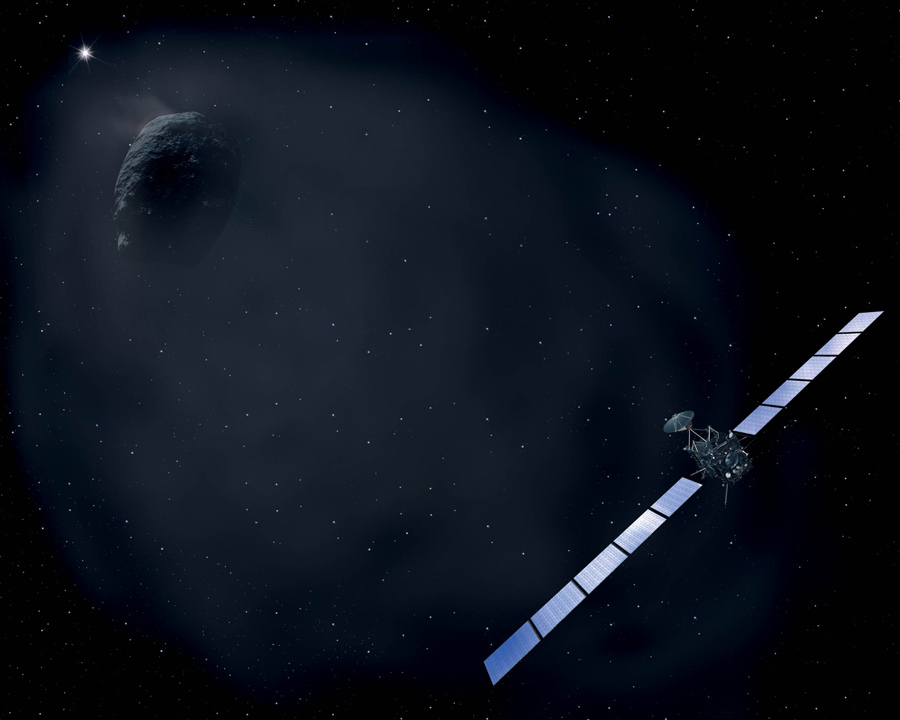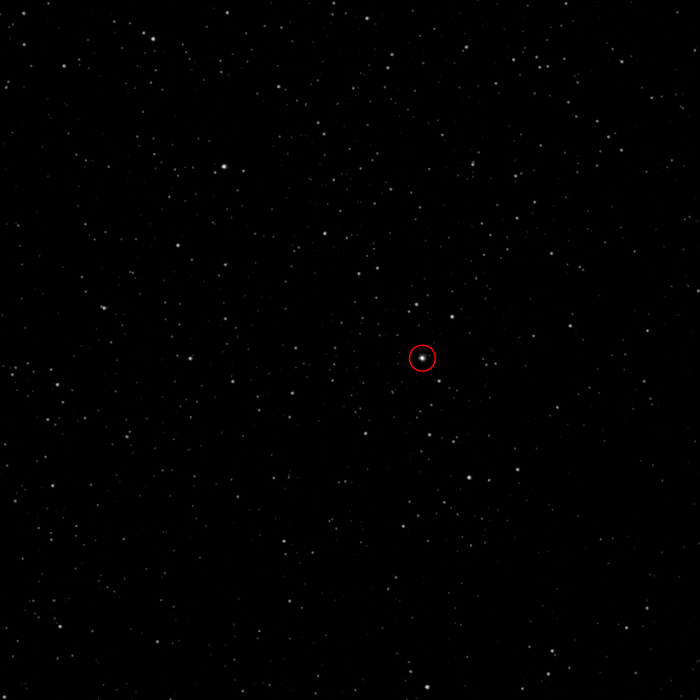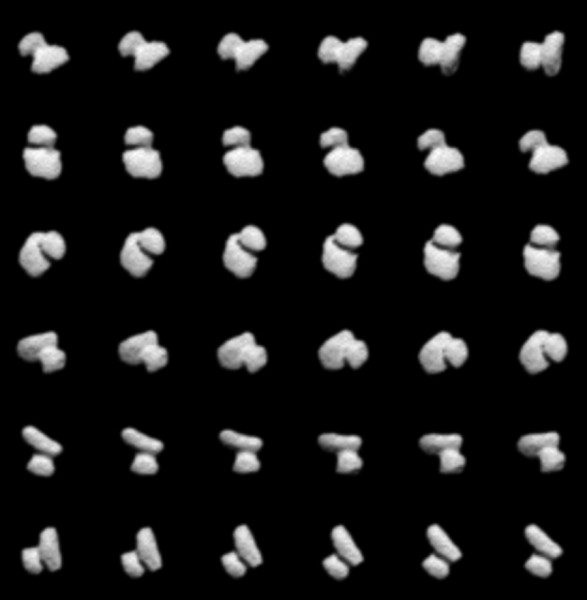Travel Photos of the Rosetta Interplanetary Station: From 2005 to the Present

This is not a photograph, but a drawing, a fantasy of the artist. Photos - under the habrakat.
The interplanetary station Rosetta with the Philae probe on board is already about 3 thousand kilometers from its target, comet Churyumov-Gerasimenko. Let me remind you that it is precisely on this comet that the probe is scheduled to land in early August. As previously written on Habré , Rosetta took the most detailed pictures of the comet Churyumov-Gerasimenko, and after analyzing the photos it turned out that the comet’s nucleus is double.
It is also interesting that in addition to its immediate task - studying the comet’s nucleus, taking detailed photographs of the comet and everything else, the Rosetta station also performed side tasks. For example, I photographed many interesting objects, starting from 2005 (the moment the station was launched), and ending with this month. In continuation - a gallery of these photos with a description of each.

Moonrise over the Pacific Ocean (22:06 UTC), March 4, 2005. One of the first photos taken by the station's camera.

Another shot of the Earth (12:47 UTC), March 5, 2005.

Approach to Mars per 1000 km. Photograph taken by a Philae probe from the station. Visible Rosetta site, including solar panels. By the way, in the photo of Mawrth Vallis. Here, Mars Express’s OMEGA instrument was able to detect the presence of hydrated clay minerals - a direct indication that water could have flowed across the planet’s surface in the early history of Mars.

The first true-color image of Mars (obtained using red, green and blue filters). The photo was taken on February 24, 2007 (19:28 UTC) from a distance of approximately 240 thousand kilometers. Image Resolution: 5 km per pixel.

Pictures of the asteroid Steins (2008), taken from a distance of 800 km. The diameter of the asteroid is about 5 km. At the top of the asteroid is a large crater with a diameter of 1.5 km. Scientists were surprised that the asteroid was able to maintain integrity after the collision of such a force with some kind of celestial body.

Stereoscopic (3D, yeah) image of the same asteroid. Received September 5, 2008.

A photograph of the Earth taken by Rosetta on November 12, 2009 at the time of approaching the planet at 633 thousand kilometers. Here, as in the case of Mars, the generation of true-color images using red, green and blue filters is used.

Anticyclone over the South Pacific. Photo taken November 13, 2009.

Asteroid Lutetia, 2010.

Lutetia and Saturn. The distance to Lutetia is 36 thousand kilometers. The photo was taken in the same 2010.

Lutetium. The photo was taken at maximum magnification. Even individual boulders are visible.

Bye, Lutetia.

The first photos of the comet from a distance of 430 thousand kilometers.

This is not a rubber duck, but the nucleus of comet Churyumov-Gerasimenko. Most likely, this nucleus was formed as a result of the fusion of two cometary nuclei.
And here is a video with the station trajectory:
Via esa
